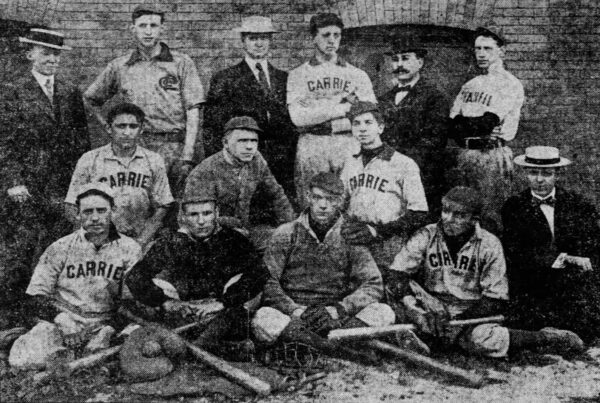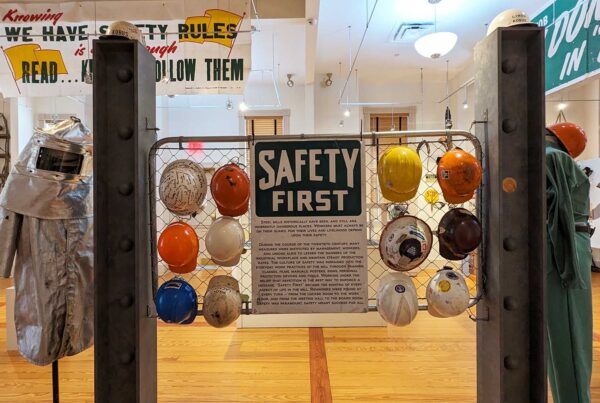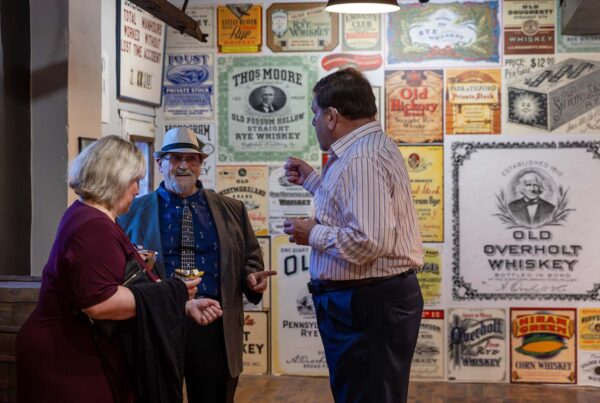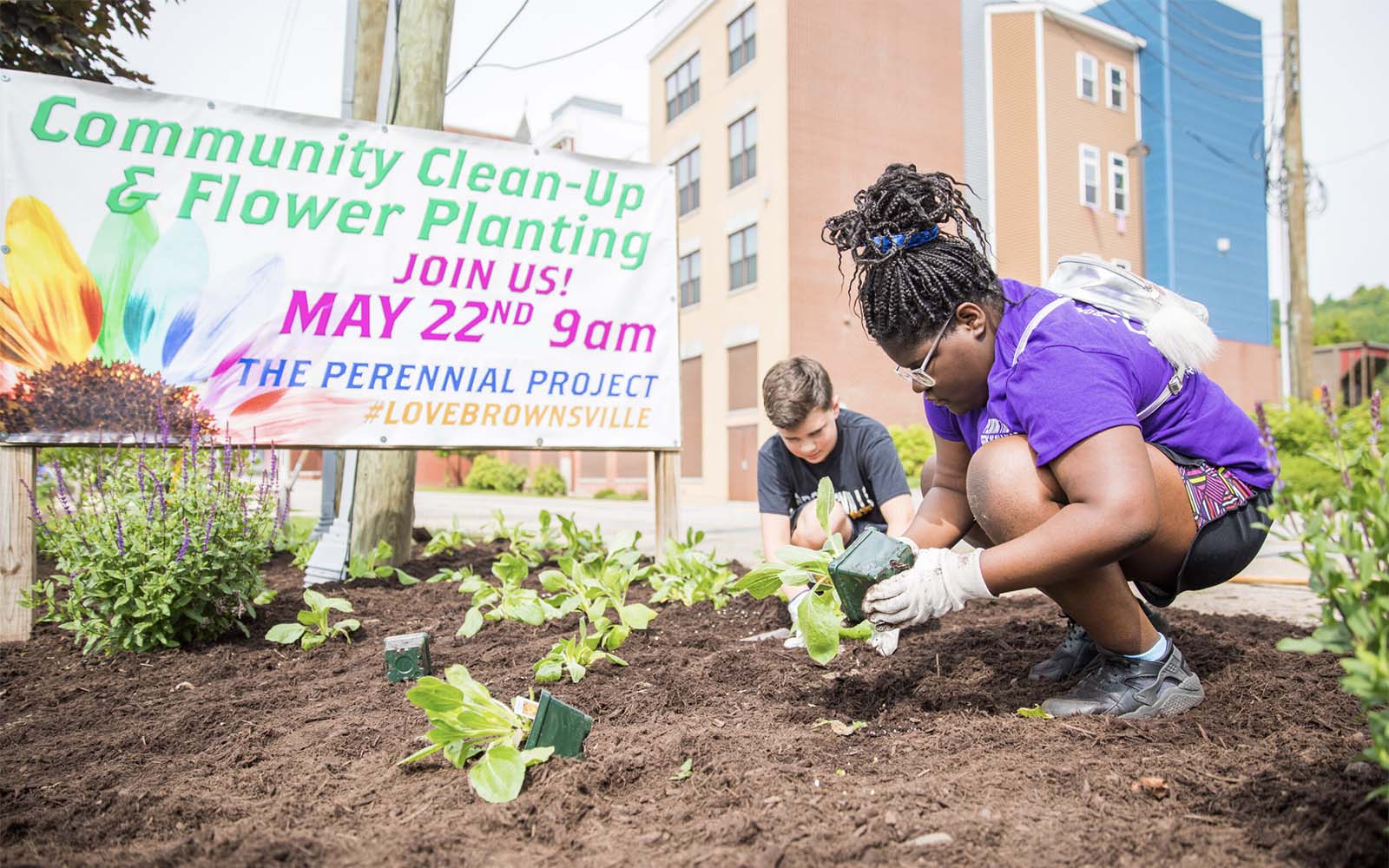
Youth volunteers help plant flowers in the new Hope Park in Brownsville.
Community Spotlight—Brownsville’s Perennial Project
The Community Spotlight series features the efforts Rivers of Steel’s partner organizations, along with collaborative partnerships, that reflect the diversity and vibrancy of the communities within the Rivers of Steel National Heritage Area.
By Gita Michulka, Contributing Writer
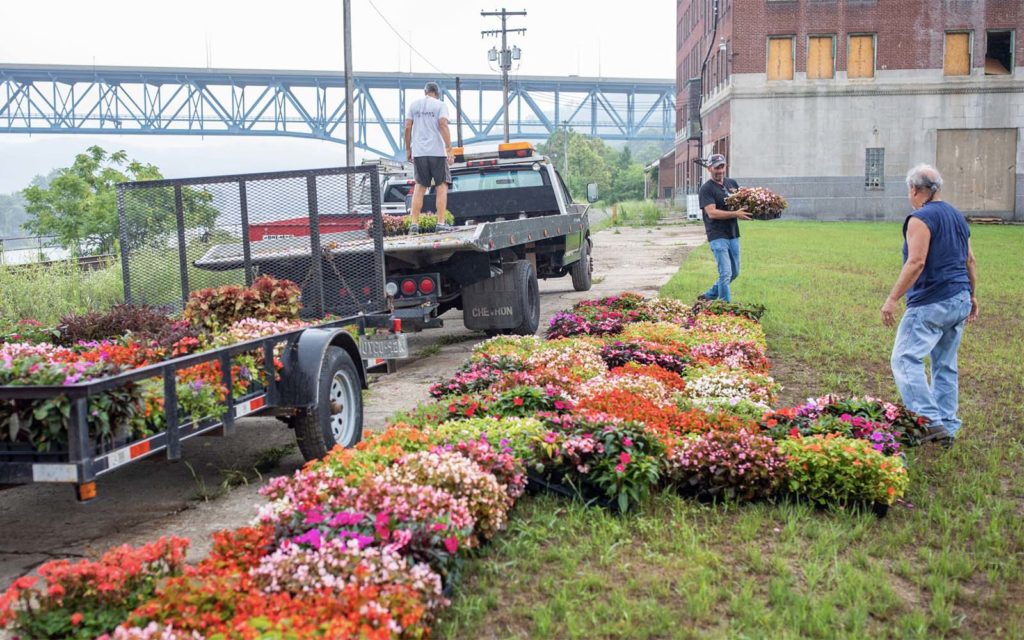
Flowers are delivered to Hope Park.
Redefining a Community Through Art and Education
Before its Big Steel era, Pittsburgh was a center for commerce and transportation. However, it wasn’t the region’s only significant thoroughfare for travel and industry. The town of Brownsville, Pennsylvania, a one-square-mile borough located about 40 miles south of Pittsburgh, rivaled Pittsburgh as an important travel hub. Originally a trading post, Brownsville’s location along the Monongahela River gained importance when it became a stop on the historic National Road, the nation’s first federally funded interstate highway. (Learn more about how to experience it locally through the National Road Heritage Corridor.)
The National Road—today known as U.S. Route 40—connected travelers coming from the East to connect with steamboat and rail travel to the West that occurred between 1811–1837. As Brownsville became a hub for steamboat manufacturing, the borough also developed a high-end downtown business corridor that became a destination for shoppers from Pittsburgh and beyond.
Learn more about Brownsville’s place in history in this video.
“If you go back far enough, Brownsville was the place to be!” says Joe Barantovich, with a laugh. “It was once said that Pittsburgh wouldn’t be anything because it was too close to Brownsville.”
Barantovich grew up in the Brownsville area, then left to pursue a teaching and coaching career in Florida. While he was away, an ebb of industrial jobs led to population decline, shuttered businesses, and vacant lots. Brownsville Borough and adjacent Brownsville Township and West Brownsville shrunk in size from 10,000 residents to a little over 2,000.
Returning to a nearly desolate downtown didn’t sit right with Barantovich. Inspired by a group of high school students who initiated a school project to develop an outdoor performance stage in one of the vacant lots, he decided one day that he wanted to plant some flowers around town.
“I said, ‘I only want to plant some flowers,’ because it was something that I knew that I could do myself,” says Barantovich. “I could pay for it myself, and if nobody else cared, at least when I drove through town, I’d feel better.”
But people around town did care. One day of planting three years ago led to the creation of The Perennial Project, a 501(c)3 founded by Barantovich and run by a small team and a whole lot of community buy-in. Each year, The Perennial Project hosts community beautification events, design workshops, and art installations, and the groundswell of volunteer support the projects attract has not waned.
“It’s really, you know, not about me or my organization,” notes Barantovich. “It’s about all the people in town who love their community. The school district and the borough council and the township supervisors and the local business owners, I mean, everybody just kind of jumped in and started doing a piece.”
The organization is supported by more than a dozen partners, including the Greater Brownsville Chamber of Commerce, the Borough of Brownsville, Fayette County Chamber of Commerce, Go Laurel Highlands, Brownsville Area School District, the Brownsville Free Public Library, the Rotary Club of Brownsville, the Brownsville Sons of Italy, and Pennsylvania American Water, EQT, and the University of Pittsburgh School of Engineering.
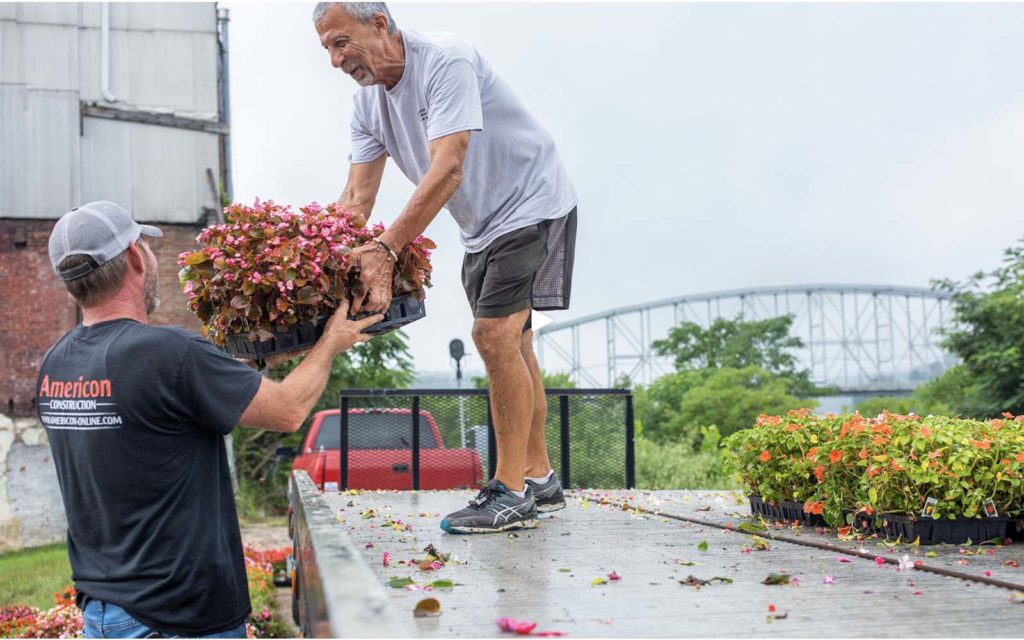
Joe Barantovich hands off flowers from the delivery truck.
Hope Park
After a grouping of buildings was condemned and removed last year, an unobscured viewpoint of the Monongahela River from downtown opened up a big opportunity for the group.
“At that point we had a view that we’ve never had before. Or at least not, you know, for a couple hundred years. You could stand in town and actually see the other side of the river. It became a nice piece of ground after those buildings were torn down,” says Barantovich.
Recognizing the work The Perennial Project had already been doing, the Fayette County Commissioners offered to fund a mini master plan for the downtown area using tourism dollars, so the group could find out how the community wanted to utilize the new space and make the area attractive to both residents and visitors alike. After a series of community input sessions, the concept of Hope Park was established.
Barantovich was quickly able to secure funding for the project through grants from Giant Food Stores, EQT Corporation, the National Road Heritage Foundation, and Rivers of Steel’s Mini-Grant Program, which only added to the momentum the community had already spurred for the development of the lot.
The goal for Hope Park is to create a public greenspace that will serve as a year-round destination. Once completed, the space will offer active and passive recreation, community gathering, and a strengthened connection to businesses, historic tourist sites, and riverfront amenities.
An exciting key feature of the project is an outdoor movie screen, paired with public art banners, a multipurpose sport and recreation surface, a walkway that will lead visitors throughout, and amenities like new benches, trash receptacles, and a fence.
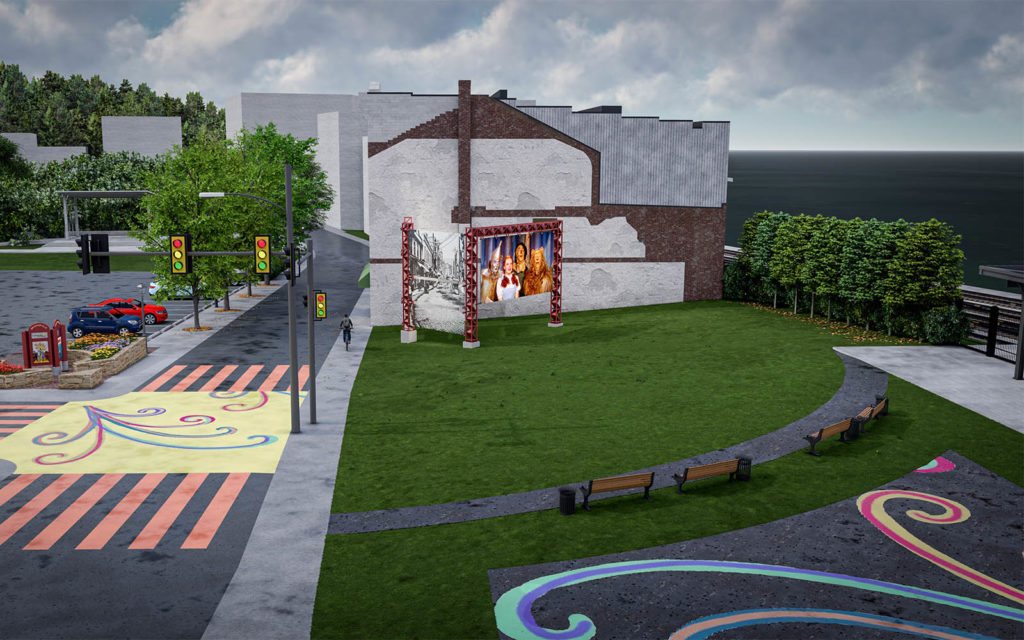
A rendering of what Hope Park may look like after its completion.
The (Virtual) Rebirth of Union Station
Beyond the work The Perennial Project does to breathe new life into Brownsville, Barantovich has also combined his passion for teaching with the ongoing historical preservation around town, to inspire Brownsville’s youth to join in in groundbreaking ways. Utilizing 3-D scans of historic structures, including the iconic Union Station, students are now creating virtual reality programs that allow a viewer to feel as though they are walking through the station in its heyday.
As he discusses the work that is happening through The Perennial Project and around town, Barantovich is quick to note that what is occurring in Brownsville is more than just revitalization.
“I keep saying ‘revitalization’ is the wrong word, because we’re not bringing back to life what used to be here. You know, the coal mines, the steel mills, the steamboats—that’s all part of the past. What’s happening now in Brownsville is a renaissance.”
A group of local merchants and residents will be hosting the first annual Riverfest in August 2022, where you can check out the progress of Hope Park and other downtown beautification projects. To learn more about The Perennial Project visit brownsvilleperennialproject.org.
About the Mini-Grant Program
Rivers of Steel’s Mini-Grant Program assists heritage-related sites and organizations as well as municipalities within the Rivers of Steel National Heritage Area to develop new and innovative programs, partnerships, exhibits, tours, and other initiatives. Funded projects support heritage tourism, enhance preservation efforts, involve the stewardship of natural resources, encourage outdoor recreation, and include collaborative partnerships. Through these efforts, Rivers of Steel seeks to identify, conserve, promote, and interpret the industrial and cultural heritage that defines southwestern Pennsylvania.
The Rivers of Steel National Heritage Area is one of twelve supported by the Pennsylvania Department of Conservation and Natural Resources (DCNR). Funding is provided via DCNR’s Community Conservation Partnerships Program and the Environmental Stewardship Fund to Rivers of Steel, which administers the Mini-Grant Program. The Perennial Project is one of eight organizations who received Mini-Grant funding through this program in 2022.
 Gita Michulka is a Pittsburgh-based marketing and communications consultant with over 15 years of experience promoting our region’s arts, recreation, and nonprofit assets.
Gita Michulka is a Pittsburgh-based marketing and communications consultant with over 15 years of experience promoting our region’s arts, recreation, and nonprofit assets.
If you’d like to know more about community projects supported by the Mini-Grant Program, read Gita’s recent article about the Murals of Maxo Vanka.
Photos are courtesy of The Perennial Project.

